Pay parity is when an employer pays its workers equal compensation. This doesn’t mean paying new hires the same as people with 10 years of seniority at your company. Instead, it means paying people the same for similar roles that provide similar value to the company.
As it stands, the pay gap persists in the US. Even companies that want to close it have a hard time making it a reality.
That’s why we’re introducing you to the five top companies that are working toward pay parity. Not only are they leading the way, but they’re also doing it with admirable transparency. That means the rest of us can take notes on their strategies.
We can use their pay parity blueprints to resolve common compensation issues and close the gap in our organizations.
Adobe’s Pay Parity Strategy

Adobe has one of the most organized approaches to achieving pay parity that we’ve ever seen.
In the mid-2010s, the company realized that it needed to work toward equal pay opportunities for everyone on its team.
Which, by the way, is enormous. As of December 2022, Adobe employs nearly 30,000 people across the globe.
But we digress.
Instead of ignoring the pay parity problem or slapping a bandage on it, Adobe got down to business. First, it outlined exactly what pay parity meant when it came to Adobe employees.
Here’s the definition Adobe decided on: “We defined [pay parity] as ensuring that employees in the same job and location are paid fairly relative to one another, regardless of their gender or ethnicity.”
Next, the company took a hard look at each group of related positions within the company—its job families. Adobe realized that some jobs didn’t really belong in the same family at all.
Some employees in the same job family were doing completely different tasks using unrelated skill sets. This made a fair pay comparison challenging.
So Adobe untangled these family clusters. They examined each job family, created new ones where needed, and updated the levels within each grouping. Employees got shifted into the job families that actually described the work they did.
The pay parity team at Adobe then reviewed pay practices in the two countries with the most employees—India and the US—and made adjustments as needed. By October of 2018, Adobe had achieved global pay parity in the 40 countries where it has employees.
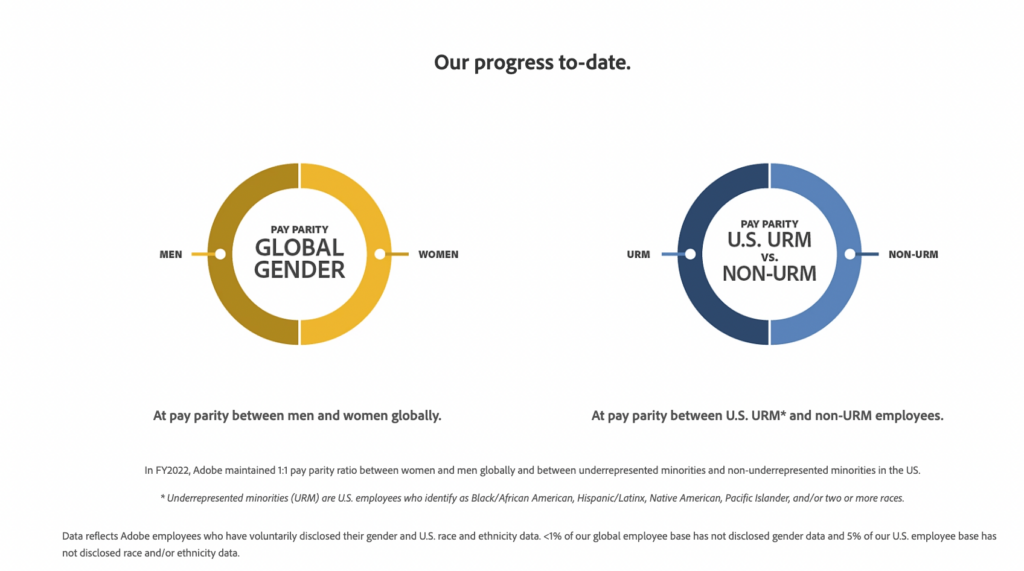
But Adobe didn’t stop there. The company took additional steps to improve its pay parity, including:
- Switching from yearly to twice-yearly promotion cycles
- Reviewing annual salaries every year to ensure fairness
- Disclosing pay ranges on US job postings
- Discarding the practice of asking recruits or interviewees for pay history
Each year, the company looks into its employee data and looks for areas where it can improve. You can explore Adobe’s statistics yourself, too.
Key Takeaways From Adobe’s Journey
Here’s how you can adopt Adobe’s strategies as you work toward achieving pay parity in your organization:
- Start from the beginning. Look at your job descriptions and the skills they require. Sort them into accurate job families. Create levels within each job family that correspond with different pay ranges.
- Make the process transparent. Adobe has invited everyone into the process of watching the company achieve and maintain pay parity. This type of transparency builds trust—and admiration!
- Continue to look for areas of improvement. Now that it has achieved pay parity, Adobe is committed to opportunity parity. In other words, it’s working to identify areas where it can improve employee access to opportunities within the company. How can you keep improving?
Salesforce’s Pay Parity Strategy

Salesforce is a leading customer relationship management (CRM) company. It also has a reputation as a company that’s wonderful to work for. That’s partly because of Salesforce’s commitment to pay parity.
Back in 2015, Salesforce examined its pay structures, looking for gaps that needed closing.
Like Adobe, Salesforce recognized that it couldn’t just address pay parity once and move on. So the company continuously monitors its compensation strategies. This is an especially important step for Salesforce because the company is an acquisitions giant.
Since 2018 alone, Salesforce has acquired software powerhouses like Slack, Tableau, and MuleSoft. The company realized that every time it acquires a new company, that company’s pay structures come along too.
Which means more internal reviews and adjustments.
So Salesforce analyzes its pay equality every year. It does this by sorting employees into groups according to their roles and responsibilities. First, Salesforce analyzes each group for gender-driven pay gaps. In the US, the company takes the added step of assessing whether there are race-related gaps.
If there are, the company adjusts compensation to close those gaps.
After it acquired Slack, Salesforce discovered three things:
- 8.5% of its 70,000 global employees needed higher pay
- 92% of pay gaps around the globe were based on gender
- 8% of pay gaps in the US were based on race or ethnicity
Salesforce spent $5.6 million closing these gaps.
The company is also dedicated to increasing equality when it comes to opportunities for advancement. This plays right into pay parity. If only certain groups can advance to high-paid leadership roles, you can close all the gaps in the world and still not achieve true equality.
One of our favorite things about Salesforce is that the company invites you to be part of its continual journey toward equality. You can view an interactive chart showcasing the data from Salesforce’s annual pay review from 2018 to the present.

You can also stay up-to-date on Salesforce’s progress through the yearly equality updates given by its chief equality officer.
Key Takeaways From Salesforce’s Journey
- Look beyond gender. After you look at gender-driven gaps, what other metrics can you use? Are people of different races and ethnicities receiving the same pay as their peers in similar roles?
- Consider your acquisitions. Keep a close eye on pay parity as you merge with or acquire another company. If you regularly join hands with other businesses, all of you should be on the same level when it comes to pay parity.
- Appoint a chief equality officer. More companies than ever are hiring chief equality officers to lead the charge on pay parity and other important equality goals. Can you do the same?
Visa’s Pay Parity Strategy
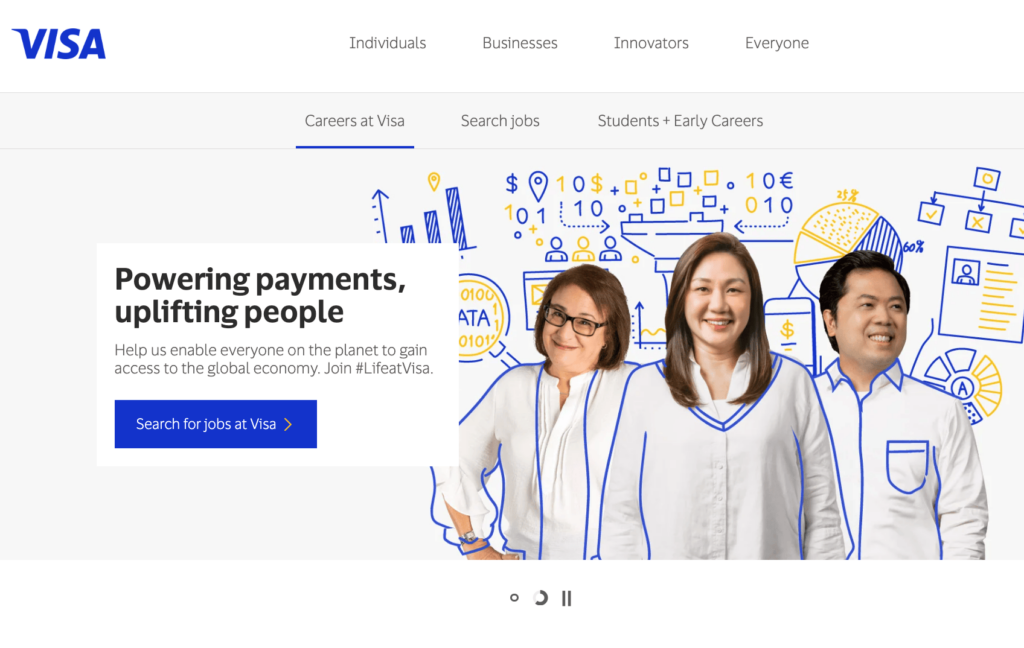
When the pay equity efforts gained real traction in the mid-2010s, Visa was one of the first big companies to join the movement.
Since then, the company has achieved gender pay equality for all of its employees across the globe. It also maintains pay equity for people of all races and ethnicities within the US.
Like other companies committed to pay parity, Visa conducts an annual analysis of its pay structures to make sure it’s staying on track.
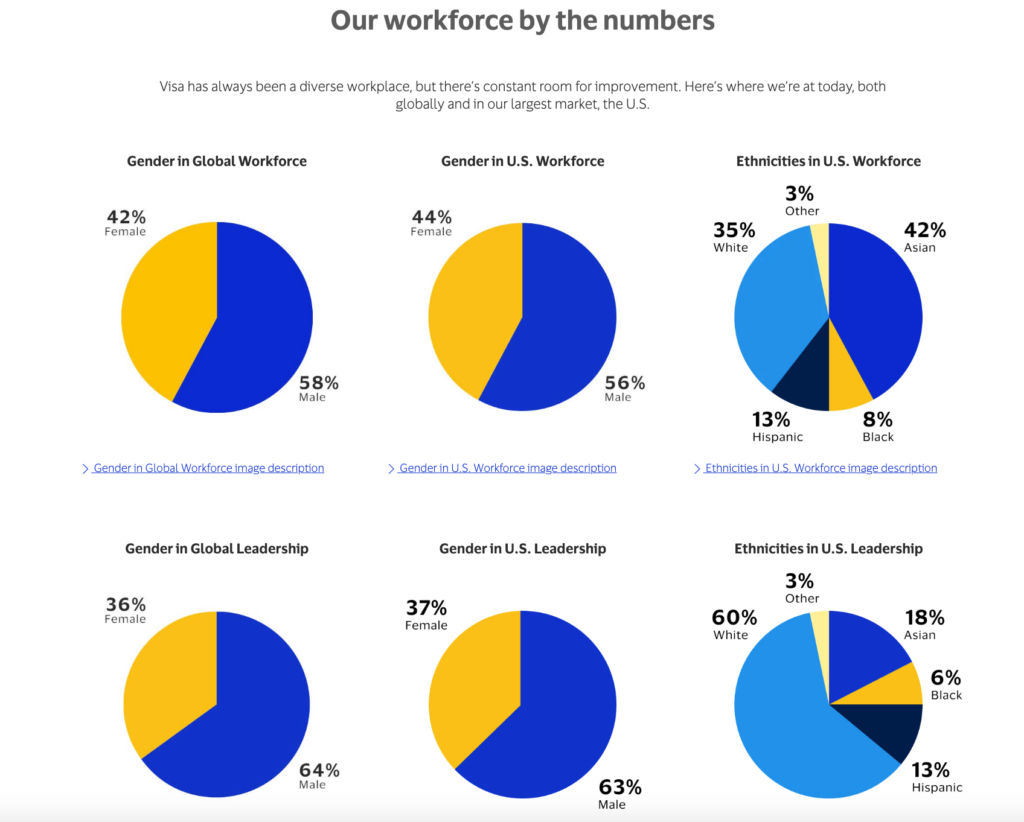
Visa puts the data it collects into pie charts that are easy to read and notes areas of improvement. For instance, in the chart above, you can see that the global workforce is 42% female and 58% male. But global leadership is even less equal, with 36% of leadership positions in the hands of women versus 64% for men.
In other words, there’s room for pay equity on a deeper level.
And Visa knows it. Above the pie charts, you’ll see this quote: “Visa has always been a diverse workplace, but there’s constant room for improvement.”
We appreciate that Visa doesn’t pretend to have arrived at pay equity and equality. In its 2022 Environmental, Social, and Governance Report, Visa outlined its most recent pay parity goal. This is to include 100 percent of Visa’s fully integrated subsidiary employees in pay analyses and reports.
Currently, Visa tracks, measures, evaluates, and reports on the compensation of 99.8% of its subsidiary employees.
Visa has also put a strong focus on providing career opportunities to people who typically struggle to get hired. The company identifies these groups and then builds programs and events designed to help them make connections and gain skills. One example is Visa Europe’s Talent Accelerator Program, which aims to help underrepresented professionals move up to leadership positions.
Another is its Visa Black Scholars and Jobs Program, a collaboration with the Thurgood Marshall Foundation College Fund. The program provides mentorship, scholarships, and internships to a cohort of qualifying students. Every student who completes the program receives a full-time job offer at Visa.
Even though these programs don’t seem directly related to pay parity, they are.
Pay parity isn’t just about equal pay. It’s also about expanding employment opportunities for people society has historically pushed aside.
And one more thing: when companies measure pay gaps, they often do so after adjusting for things like education level and experience.
To illustrate this, let’s say two employees, Martha and Bob, both work the same role at the same level in their job family. They both started working at Example Corporation in 2015.
Bob gets paid $10,000 a year more than Martha, but he’d been working in the industry for five years when he got hired. Martha, on the other hand, landed her job at Example Corporation straight out of college.
With an adjusted pay gap analysis, Bob and Martha might look, on paper, like they’re receiving equal wages. Bob has more work experience than Martha, after all.
But if you remove the adjustment for Bob’s work experience, there’s still a pay gap.
Since there’s no global standard for making adjustments, activists want corporations to go beyond adjusted pay gaps. Adjusted pay gaps are a start, but change only comes when companies examine their unadjusted median pay gaps too. Median pay gaps highlight groups of people who face greater barriers than their peers.
Because of this, companies have begun to explore their unadjusted pay gaps to see where they can expand access to work opportunities.
So what does all this have to do with Visa? As of October 2022, Visa has agreed to join a handful of companies committed to releasing unadjusted median pay gaps.
Key Takeaways From Visa’s Journey
- Carefully weigh any adjustments. Many giant US-based corporations say they’ve achieved pay parity. But data obtained by the Pew Research Center shows that the gender pay gap in the US has only improved by 2% in 20 years. There are multiple reasons for this, most notably barriers like occupational segregation, work experience, and educational attainment. How can this information inform how you use—or don’t use—adjustments?
- Create opportunities for underrepresented groups. As an organization, you have the power to make room for talent that often gets overlooked. Visa is an excellent example of a company that takes the initiative to widen those gaps with programs that expand access to opportunity. So what programs can you create? Can you provide concrete opportunities for marginalized groups, working caregivers, and college graduates?
Target’s Pay Parity Strategy
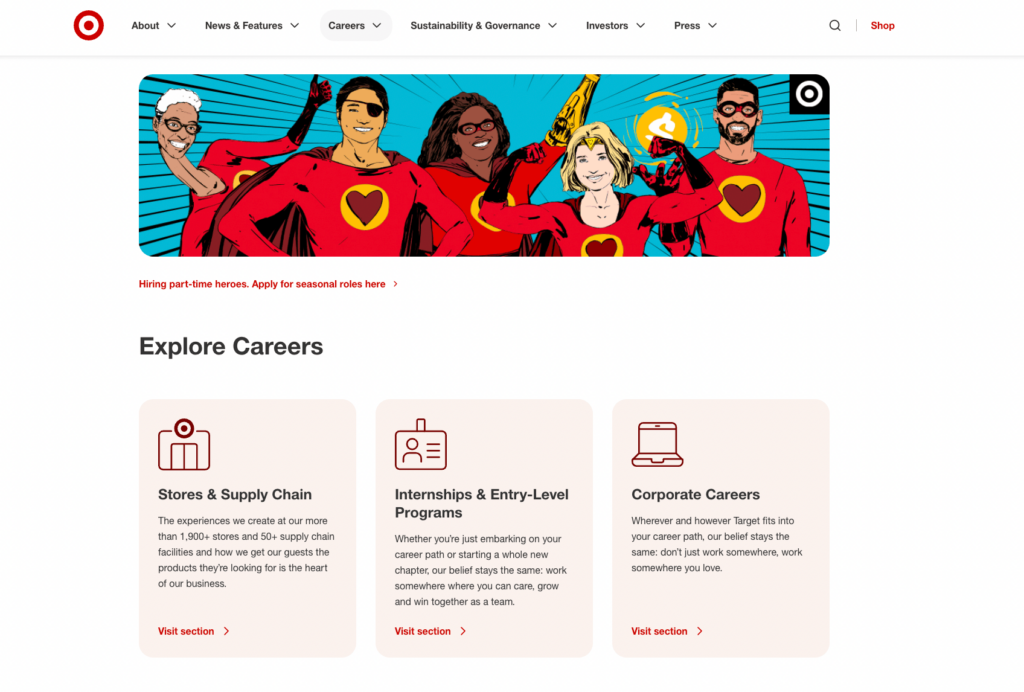
While popular retailers like Walmart and Costco got an F grade in the 2023 Racial and Gender Pay Scorecard, Target earned an A+.
And it was the only company to earn that score.
Clearly, Target is doing something right.
Like the other companies on our list, Target bases its pay parity journey on organizing employees into groups based on job type, market, level, and experience. It then monitors for any pay gaps within these groups.
Here’s what else Target does to achieve pay parity:
- Holds bias training to help management make fair compensation and hiring decisions
- Omits questions about prior salary in external hiring situations
- Conducts regular pay audits to ensure fair and equitable pay
But there’s something unique about Target compared with the other companies on this list: much of its workforce is customer-facing. Managers and leadership only make up part of the overall workforce. A ton of retail sales employees and cashiers work for Target.
And retail sales and cashier positions are notoriously underpaid.
According to the U.S. Bureau of Labor Statistics, the median wage for retail sales employees is just $14.21 per hour, or $30,600 a year. It’s even less for cashiers—just $13.58 per hour, or $28,240 per year.
These numbers hover right around the federal poverty threshold for many household sizes.
If we expand the definition of pay equity to mean greater opportunities for growth and advancement within a company, we have to address pay structures in the lower-level roles.
So what is Target doing for these employees?
First of all, the company currently offers across-the-board starting wages of $15 to $24. Team members are eligible for health insurance plans after 90 days of work as long as they work 25 hours a week or more. Employees who work 20 or more hours get dental, vision, and supplemental medical insurance.
Store employees can qualify for PTO and fairly generous parental leave benefits—at least when compared with the rest of the US.
Part- and full-time team members can also apply for the Dream To Be program, which offers free or reduced college tuition to more than 40 schools.
There’s one big pay gap that Target appears to be in the process of addressing.
Some store employees have expressed their discontent at how stores don’t provide enough hours of work. Without consistent hours, employees can’t even get the health insurance and other benefits Target provides. Much less the pay they need to survive.
Overall, however, Target is lightyears ahead of other retail companies. It reports both median and adjusted pay each year. Its leadership is increasingly equal when it comes to gender, although there’s still room for improvement.
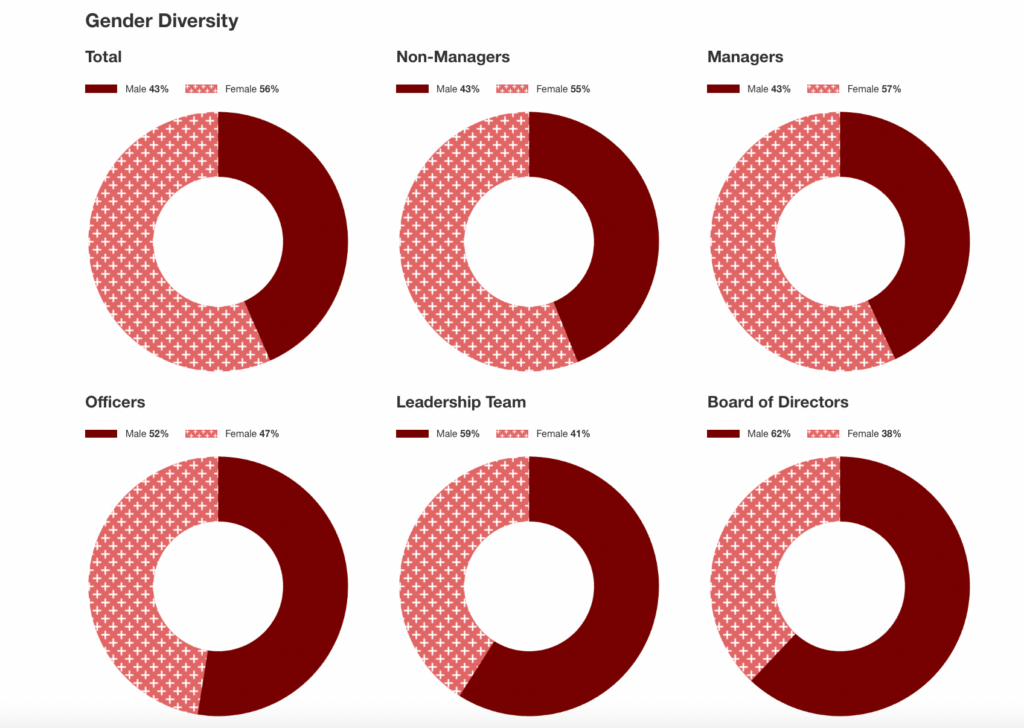
Key Takeaways From Target’s Journey
- Remember employees at the lower levels of your company. Pay parity means fair compensation across the board. Do the people at the lowest levels of your company make a living wage? How do their wages and benefits compare with similar roles in your industry? Is there room for improvement?
- Provide educational opportunities. College costs a lot of money. If a large part of your workforce would benefit from a degree, can you implement a program to help? Or, if some employees had less access to education than their peers, how can you help them get where they want to be? Can you fund some tuition or help repay student loans?
Pfizer’s Pay Parity Strategy
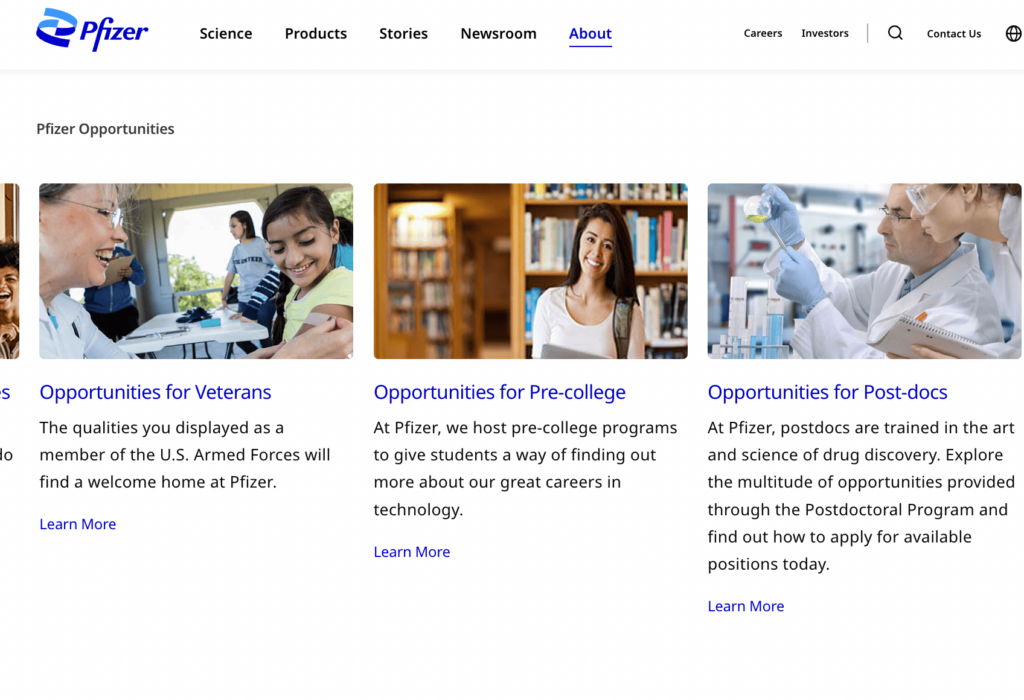
Pfizer became a household name in 2021 when, along with BioNTech, it developed and released the first FDA-approved COVID-19 vaccine. But in the years before that, Pfizer had a reputation for treating its employees well—and committing to pay parity.
And these things continue to be a priority for the pharmaceutical and biotechnology giant.
In early 2023, Pfizer published its annual pay parity report.
The key findings from the company’s adjusted pay gap analysis? Around the world, the company pays female employees 99.4% of what it pays male employees. In the US, Pfizer has achieved 100% pay parity concerning race and ethnicity.
Pfizer also published its median pay gap data for these groups. This data shows a slightly bigger gap. In this case, the median gender pay gap skews in the favor of women, who make 101.3% of what their male colleagues do.
But the median race and ethnicity gap is skewed in a less favorable direction, with minority groups making 83.6% as much as their peers in the same roles.
This means that the people who are getting paid more are earning more due to higher education levels, work experience, and steeper barriers to opportunity. Pfizer sees it as a gap to address and fix, and it has committed to increasing minority representation in its senior roles.
In 2022, Pfizer increased female representation in leadership to 43% and boosted minority representation to 28.1% in roles at or above the vice president level. By 2025, the company aims to achieve 47% female representation and 32% minority representation in these leadership roles.

Now, let’s talk about caregiving. One of the driving forces behind the gender pay gap is that caregiving duties tend to fall disproportionately on women.
At Pfizer, employees receive at least 12 weeks of paid leave after the adoption or birth of a child. Caregivers and parents also get two weeks of paid caregiver leave each year.
So the next time the dreaded stomach virus hits a house full of kids, parents can stay home and care for their sick family without stressing about using PTO to do it.
As for Pfizer’s PTO policies, they’re rumored to be pretty generous too.
Key Takeaways From Pfizer’s Journey
- Prioritize caregivers. Take a look at your parental and caregiver leave policies. Make sure your policies are fair across the board.
- Look ahead. Pfizer has specific pay equality metrics it wants to hit by 2025. Do you? Can you assess your current pay parity and establish goals to improve it? With a dedicated payroll department and quality payroll software, it becomes easier.




